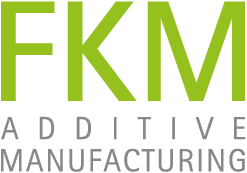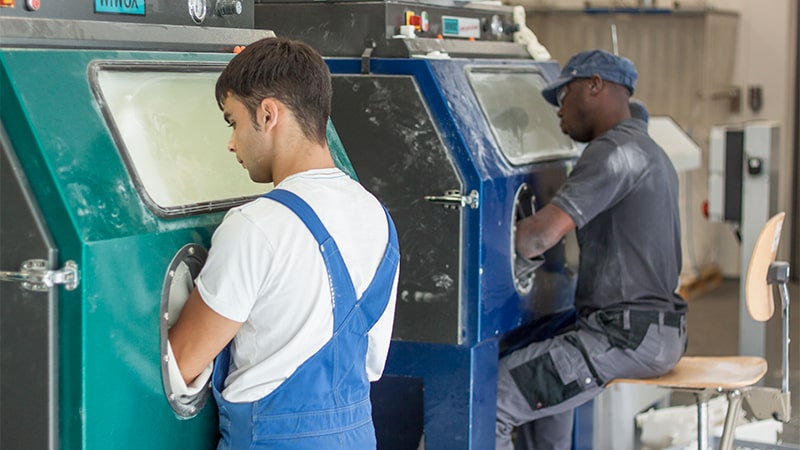3D printing is an umbrella term that includes several additive printing processes that can be used to create objects three-dimensionally from a computer program. Technical drawings of the component to be manufactured are generated in special CAD programs. These are sent to a 3D printer, which then prints using the layering process. 3D printing is therefore the opposite of conventional machining, in which objects are removed from a block of material. Additive processes play a major role, especially in the field of rapid prototyping, but also in the production of objects in series.
The term 3D printing is a synonym for the umbrella terms additive manufacturing or additive manufacturing, which are also frequently used in the professional environment. However, the term 3D printing has become established as a non-technical term in common parlance.
The Beginnings of 3D Printing
The beginnings of 3D printing date back to 1984, when Chuck Hill developed the first additive process, stereolithography. Since then, a number of other three-dimensional printing technologies have come onto the market, which print spatial objects and components made of various materials such as plastics, metals, ceramics or acrylic resins. Initially used primarily in the industrial environment, 3D printers are increasingly being used in the private sector as well. From game pieces to components for space travel, everything can be realized using 3D printing processes.
The additive processes in 3D printing
Additive processes differ in three main principles. There are methods that extrude the three-dimensional object. Here, the base material is applied almost liquidly along the specified structures and then hardens. These processes include, for example, FDM (Fused Deposition Modelling or printing with chocolate). Stereolithography or the polyjet process uses liquid photopolymers that are cured by UV light when the structures are printed. A third principle of 3D printing uses material powders that are selectively bound along the predetermined structures by heat or specific chemical processes. Both SLM (selective laser melting of metals) and SLS (selective laser sintering of plastics) are to be mentioned and are widely used – as is the case with FKM sintering technology.
How 3D printing works
No matter which process is used, the process steps in 3D printing are similar:
- Creation of the 3D model on the computer with CAD program
- Preparation of the digital model immediately before printing (e.g. slicing)
- 3D printing
- Post-processing (polishing, coloring, removal of support structures, …)
How does a 3D printer work?
Since 3D printing creates three-dimensional, spatial objects, it requires 3D printers with sufficient installation space. In the SLS and SLM processes carried out at FKM, this installation space is a closed system. This means that no foreign objects can get in during printing.
In a closed installation space, the end product determined via CAD is built up layer by layer. Within the installation space there is a movable platform that is gradually lowered during the manufacturing process. After each subsidence, a thin layer of the chosen material is applied in powder form. A powerful laser beam adapted to the base material fuses this powder along the desired contours and structures with pinpoint accuracy and according to CAD specifications. In the machines available to FKM, for example, construction volumes of up to 1000 x 500 x 450 mm can be created. Components that are larger are printed in individual units that make sense and then assembled.
The benefits of 3D printing
The creation of objects and parts from the 3D printer has many advantages. Due to the fact that pieces are produced in the layered construction process according to exact specifications from the CAD program, the material loss is extremely low. Powder that is not melted and left over can be reused for future projects. Material waste is only generated during post-processing – for example, when necessary support structures are removed during printing or the surface of a product is reground. Compared to machining, the material loss is negligible. As a result, additive processes are significantly more cost-efficient and ecologically sustainable.
Another obvious advantage is that components with complex geometries, internal cavities such as cooling channels or loose parts can be created within the object in a short time and in the course of a process step. In machining, separate work steps are required here.
The advantages at a glance:
- Time- and cost-efficient production of components
- Complex and filigree geometries
- Internal complex structures
- Free-form geometries
- Reduced material consumption
- tool-free production
- Flexible adaptation and fast adaptation
- Prototype production during development
- Fully automated production of fully functional workpieces
The materials in 3D printing
The variety of 3D printing processes makes it possible to use many different groups of materials. In addition to metals and plastics, materials such as ceramics, acrylic resin, plaster, concrete, certain foodstuffs, living cells and others can also be used. In the industrial sector, however, plastics and metals make up the largest proportion of materials used in 3D printing.
Areas of application of 3D printing
Additive manufacturing processes are finding their way into an increasing number of areas, from industry to hobby DIY. Even the food industry is now experimenting with 3D printing.
Industry & Construction
The industrial sector is the area where 3D printing processes are most commonly used. Thanks to state-of-the-art printing technologies, functional, stable and high-quality components can be efficiently produced in series or as prototypes during the development phase of new projects. Individual parts or small series can also be effectively realized with the help of the 3D printing process. The construction industry is developing in such a way that entire parts of buildings are created in 3D printers.
Automotive, Aerospace
Industries that particularly benefit from prototyping using 3D printing are the automotive industry and the aerospace industry. The variety of materials used in this process makes it possible to print components that can withstand high thermal or mechanical loads. In addition, the movement parts can be produced as light as possible and at the same time highly stable.
Medicine, Science, Research
3D printing has revolutionized medicine. Dental bridges, implants, prostheses, hearing aids and more can be adapted to specific patient requirements and manufactured at a comparatively low cost. In science and research, nanoprinting and bioprinting are worth mentioning.
Art, Fashion, Jewelry, Hobby
3D prints are also increasingly being used in art and as private applications. As far as it is technically feasible, sculptures and other three-dimensional objects can be created. Jewellery, fashion components (belt buckles, etc.) or model components are now also produced using the additive process.
3D printing at FKM Sintertechnik
FKM Sintertechnik specialises in two additive processes – selective laser melting and selective laser sintering, each with a large number of materials in powder form. From rapid prototyping to the realization of small series, we at FKM implement your orders with precision and experience.

